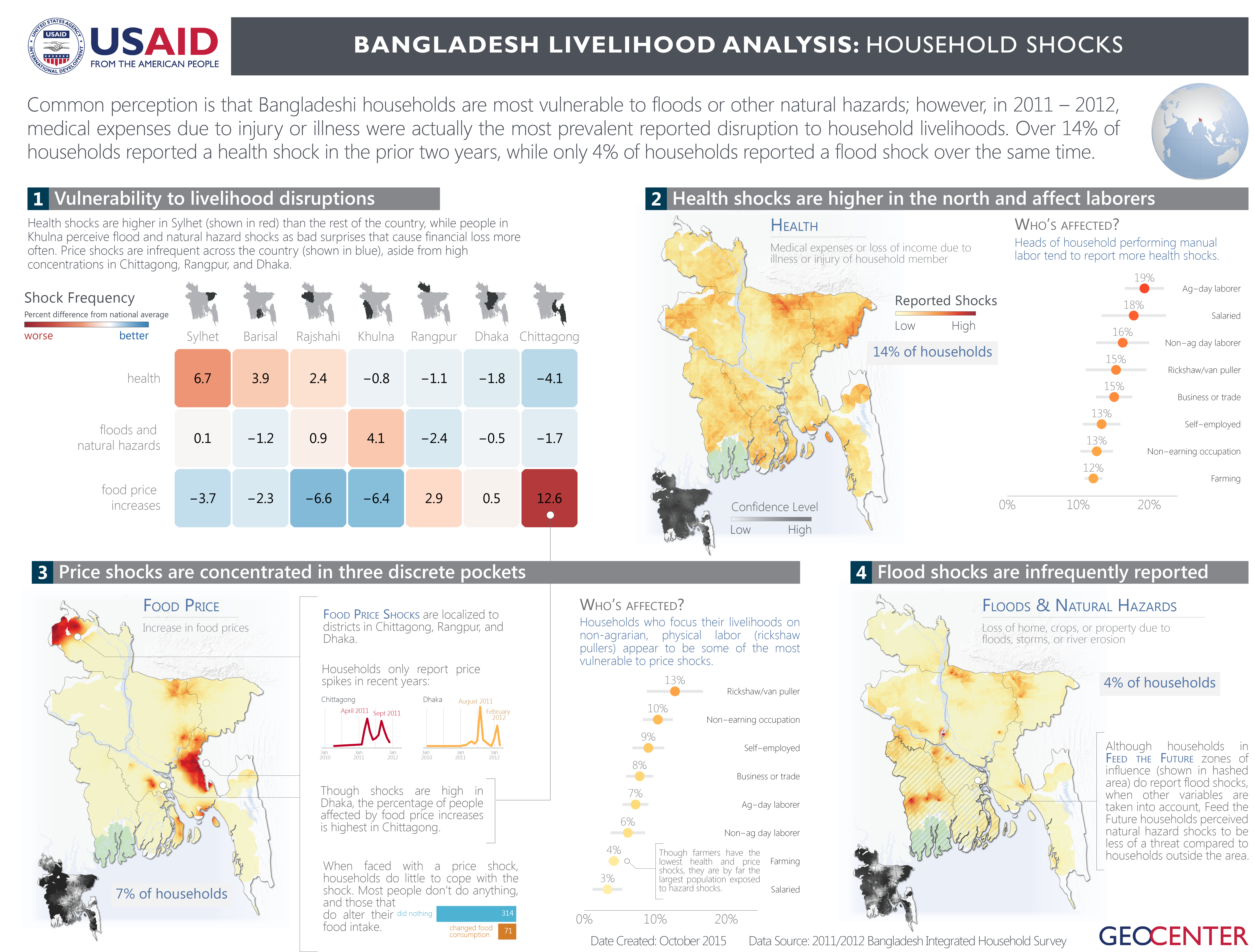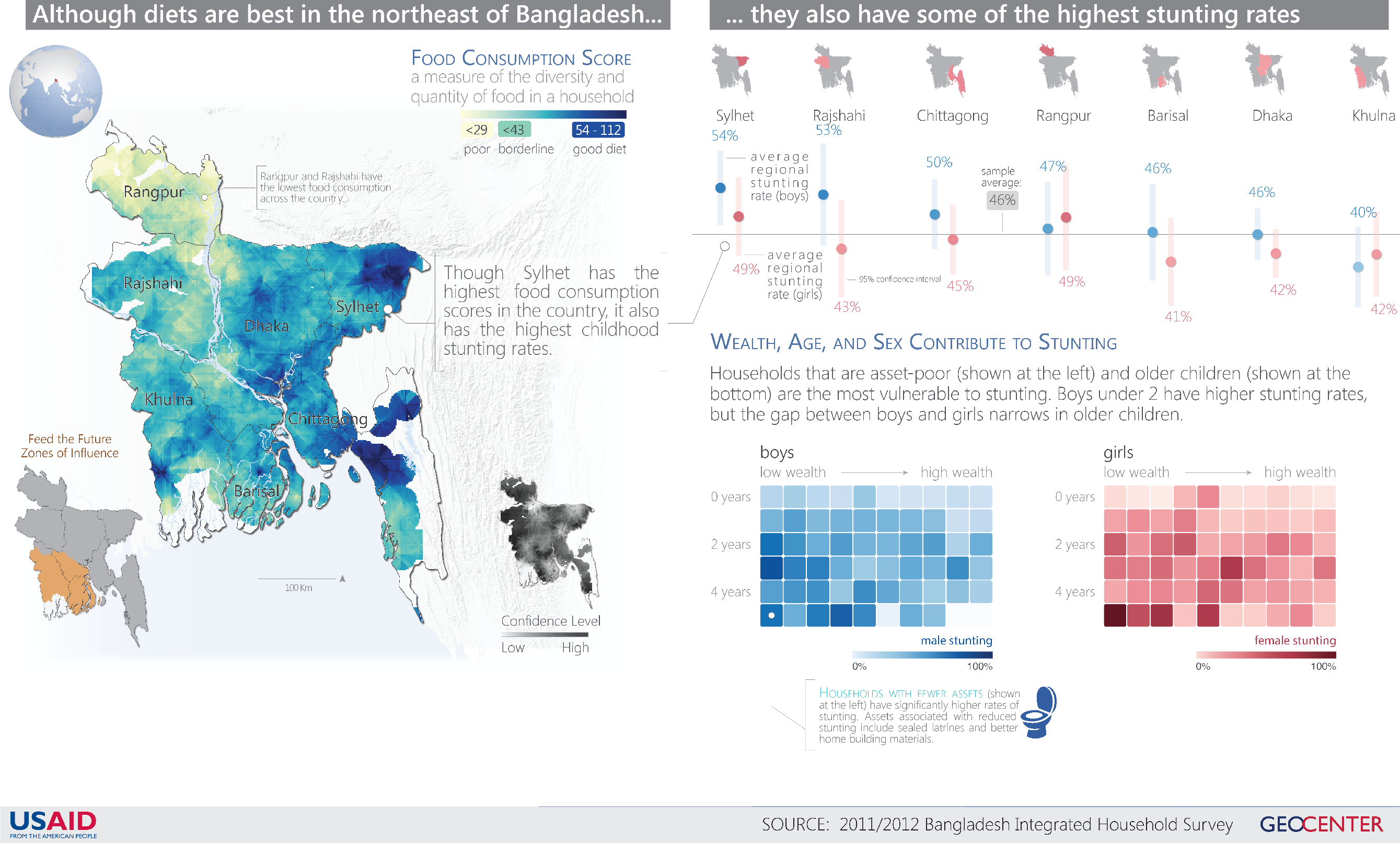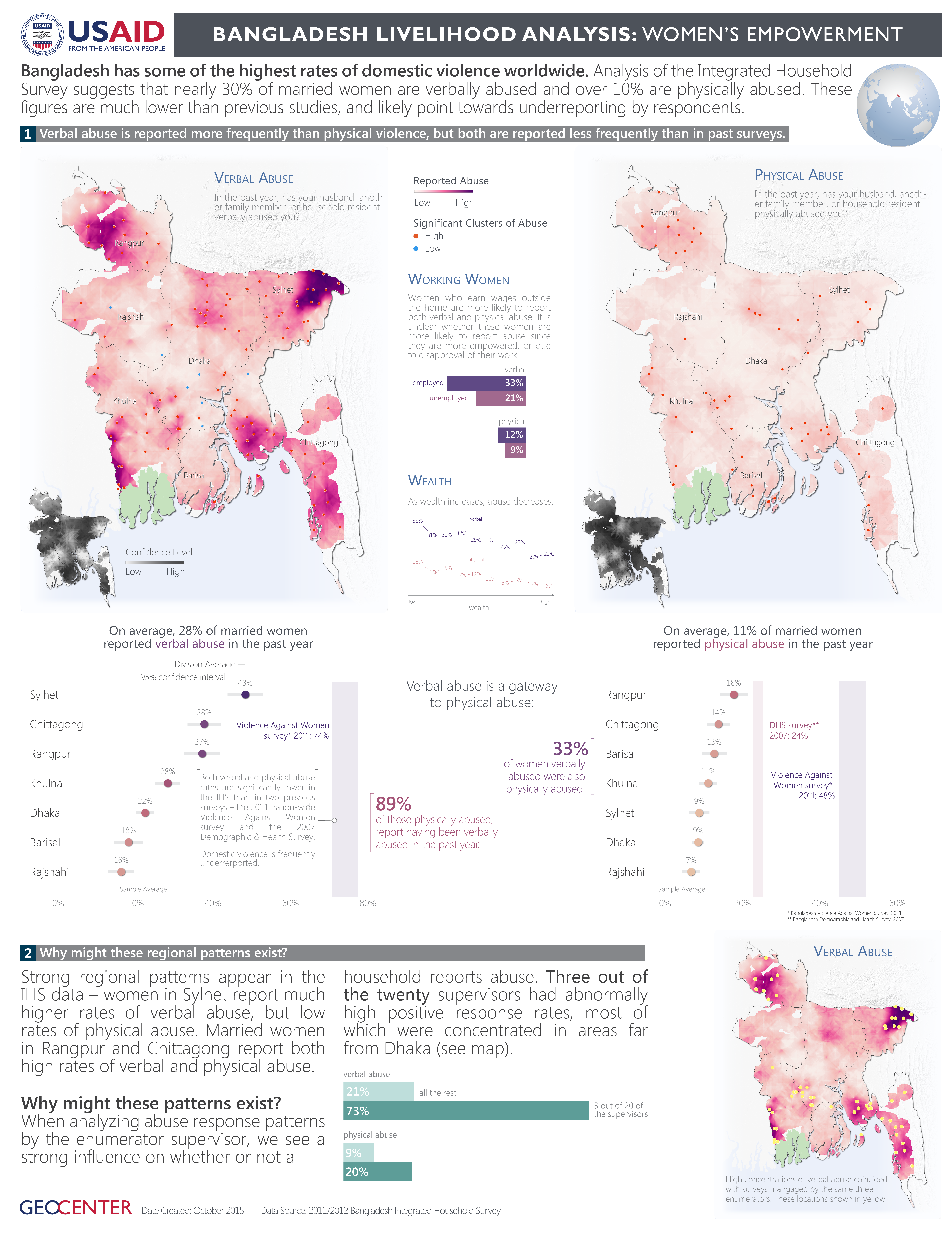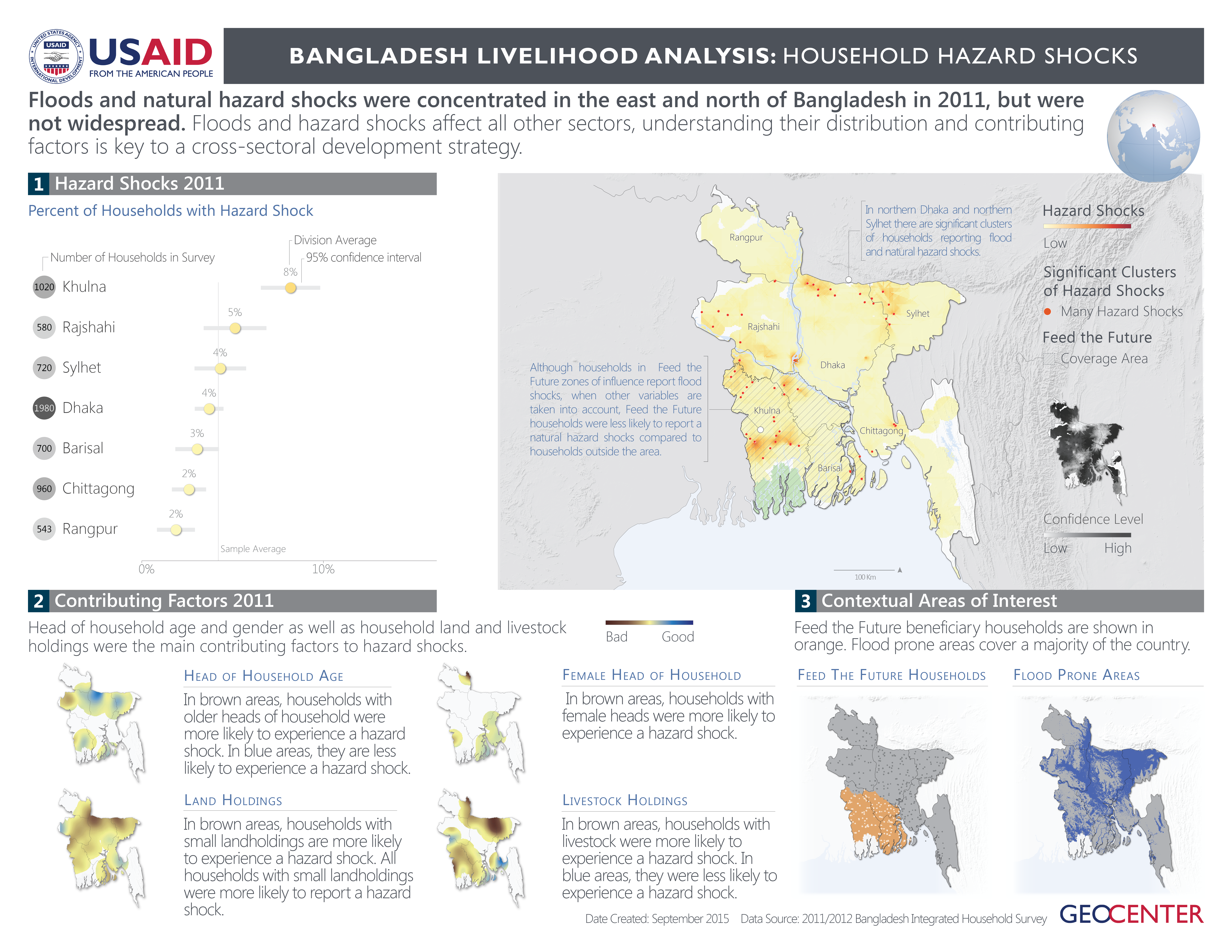Bangladesh
with Tim Essam, Patrick Gault, Brent McCusker, Jamison ConleyBackground:
What factors drive whether a household is vulnerable to unexpected shocks in Bangladesh? Where are people more vulnerable than others? What are the trends over time? And, most importantly, how do investments in international development influence these factors?
Solution:
Working with data scientists and geographers, we cleaned, processed, and analyzed household-level survey data in three distinct areas: household reports of unexpected shocks (whether from health problems, food price changes, or natural hazards); nutrition and malnutrition; and domestic abuse. In addition to doing basic characterization of who is affected, where they are affected, and how the trends have changed over time, we used regression analysis to try to understand what factors contribute to whether a household is vulnerable. This information is now being used by policy makers and international development professionals to inform where to invest funding.
Data Sources:
Feed the Future Baseline Integrated Household Survey 2011/2012




